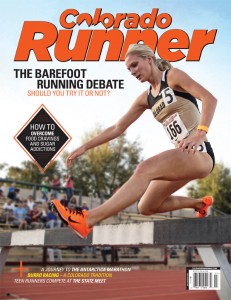The running shoe of the future may look like nothing that we currently wear. It seems that the minimalist footwear trend keeps gaining momentum. Books, clubs, websites and more are hyping the benefits of barefoot running. I seem to get an email a day from someone promoting a new minimalist shoe or product.
I, personally, have never run barefoot. The closest I have come to ditching my dozens of cushioned and stabilizing running shoes is running in Nike Frees. I like them because they are so lightweight. But the thought of actually taking my shoes off and running down the street with naked feet is scary. I mean, have you seen some of the things thrown out on the side of the road? The thought of stepping on a rock or cutting my foot on glass has me worried. And it may seem somewhat possible to try now, in the middle of summer, but once winter hits, it’s hard for me to imagine even running in minimalist shoes.
Maybe that’s just because my feet have been protected for so long. After all, barefoot running certainly isn’t a new idea. In 1960, Ethiopian runner Abebe Bikila won the Olympic marathon while racing barefoot through the streets of Rome. But Bikila had built up tough soles over a lifetime. For those of us who have had our feet protected from the elements for several decades, its likely best to start very slowly.
Advocates say that barefoot running allows our bodies to run the way that nature intended. While cushioned shoes are supposed to fix our problems and keep us from injury, they may actually hurt more than they help. By allowing the dozens of muscles and bones in our feet to work on their own without interference from shoes, our injuries could heal themselves.
But many experts argue that there is little research to back these claims. Most of the evidence is anecdotal. So, who’s right and who’s wrong in the this debate? Read more on page 14.
Happy trails!
Derek


